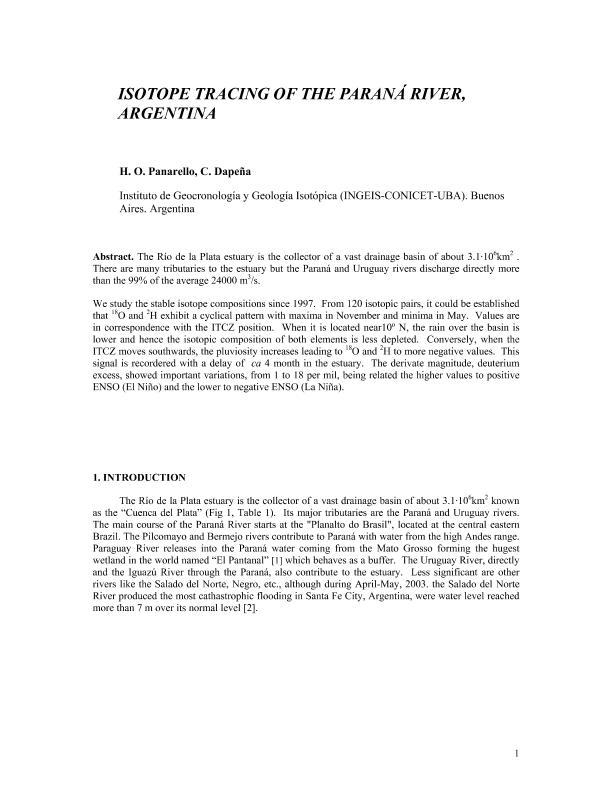Artículo
Isotope Tracing of the Parana River, Argentina
Fecha de publicación:
05/2012
Editorial:
International Atomic Energy Agency
Revista:
IAEA Tecdoc
ISSN:
1011-4289
Idioma:
Inglés
Tipo de recurso:
Artículo publicado
Clasificación temática:
Resumen
The Rio de la Plata estuary is the collector of a vast drainage basin of about 3.1x106 km2 . There are many tributaries to the estuary but the Parana and Uruguay rivers directly discharge more than 99% of the average discharge (24 000 m3/s). The stable isotope composition of water in this estuary has been monitored since 1997. From 120 isotopic pairs, it could be established that 18O and 2H exhibit a cyclical pattern with a maximum in November and a minimum in May. Values correspond to the ITCZ position. When it is located near 8oN, the amount of precipitation over the basin decreases and hence the isotopic composition of both elements is more positive. Conversely, when the ITCZ moves southward, the pluviosity increases, leading to more negative δ18O and δ2H values. This isotopic signal is recordered with a delay of ca 4 month in the estuary. The derivate magnitude, deuterium excess, showed important variations, from 1 to δ18 per mille, with the higher values being related to positive ENSO (El Nino) phases and lower values to negative ENSO (La Nina). Despite the interactions with groundwater and physical processes along ca. 2800 km, the Parana River still reflects at its mouth all these climatic phenomena that control the δ2H and δ18O contents at its catchment areas.
Palabras clave:
Enso Phenomena
,
Deuterium Excess
,
Deuterium Oxygen-18
,
Tritium
Archivos asociados
Licencia
Identificadores
Colecciones
Articulos(INGEIS)
Articulos de INST.DE GEOCRONOLOGIA Y GEOLOGIA ISOTOPICA (I)
Articulos de INST.DE GEOCRONOLOGIA Y GEOLOGIA ISOTOPICA (I)
Citación
Panarello, Hector Osvaldo; Dapeña, Cristina; Isotope Tracing of the Parana River, Argentina; International Atomic Energy Agency; IAEA Tecdoc; 1673; 5-2012; 1-20
Compartir




